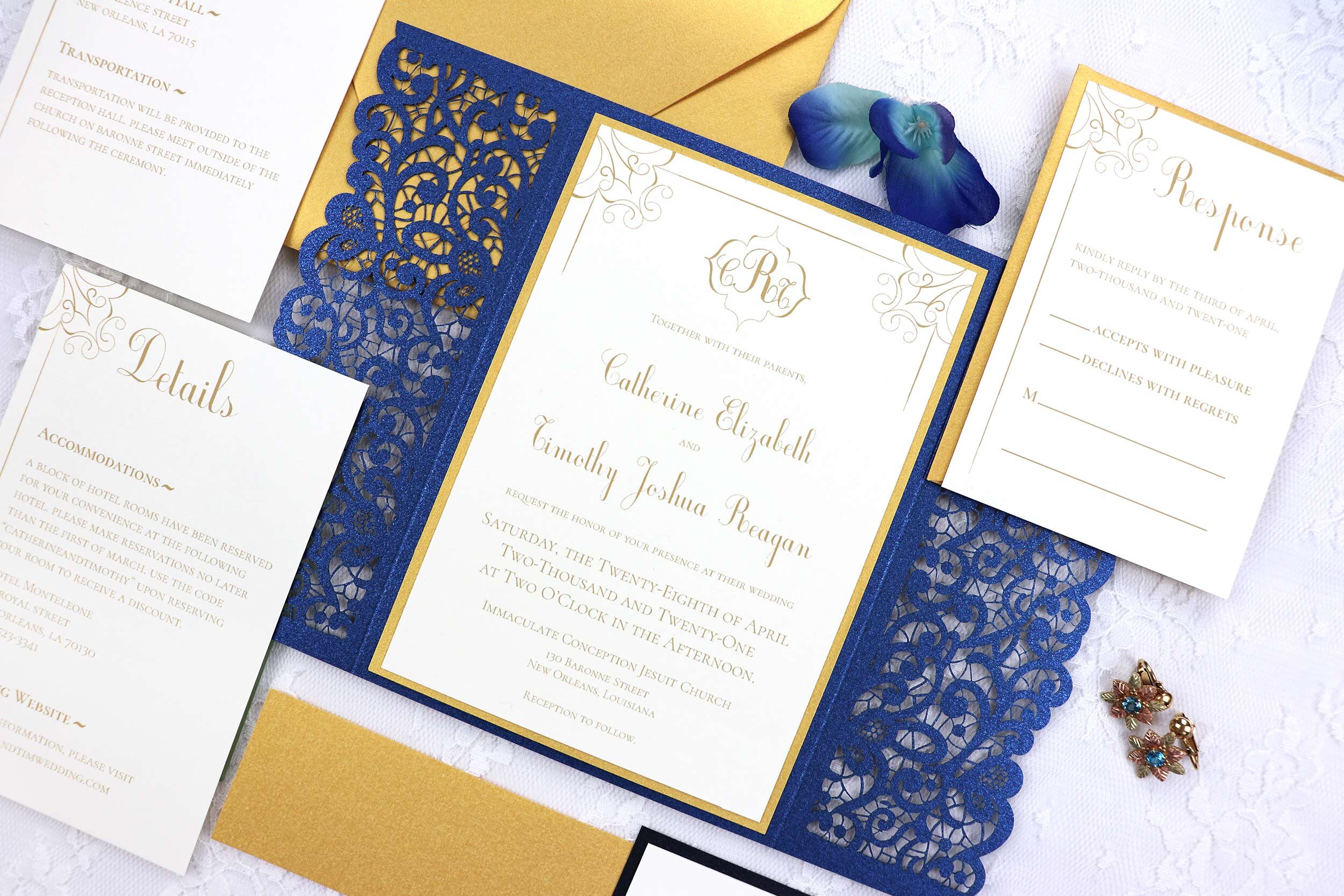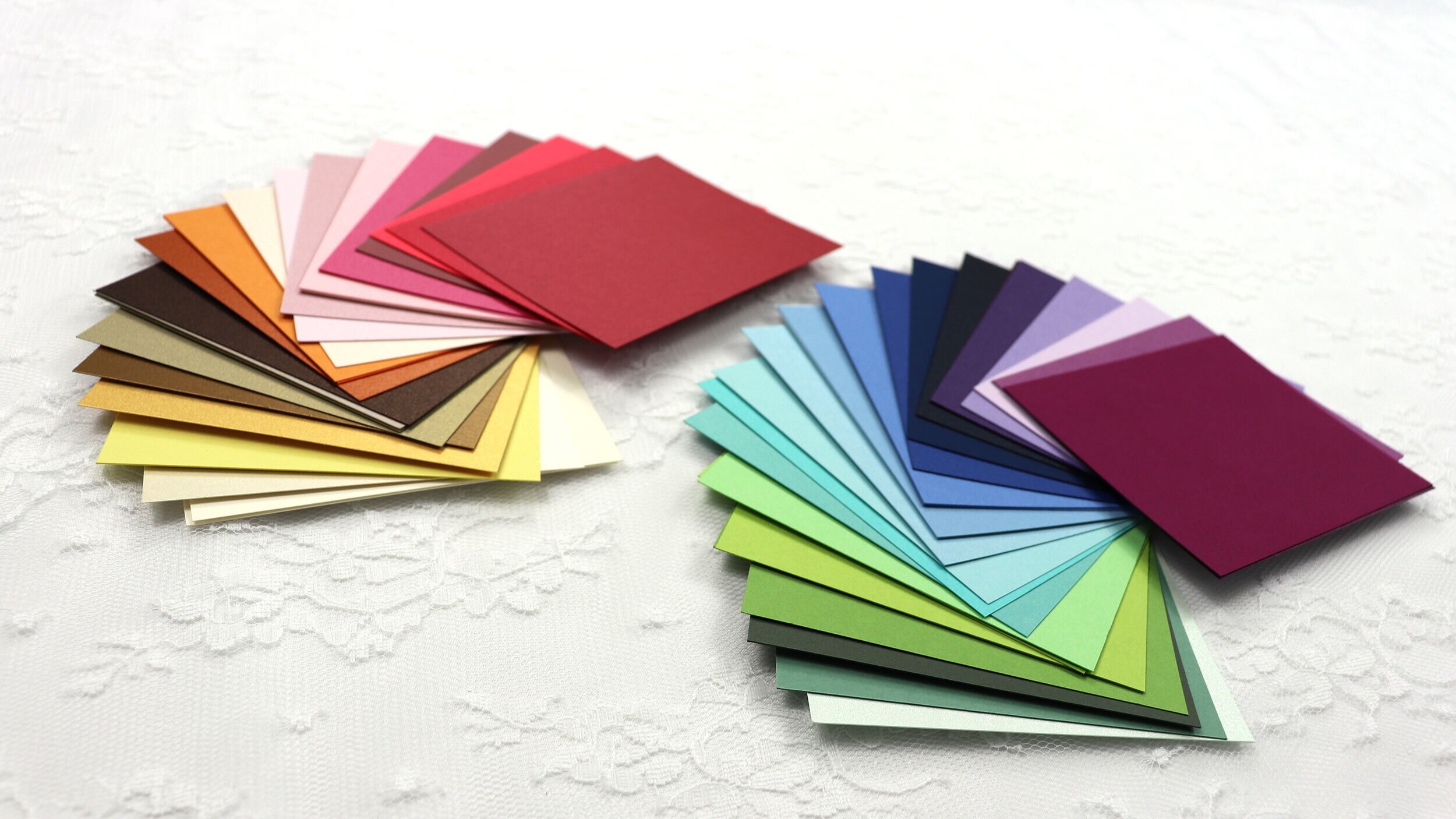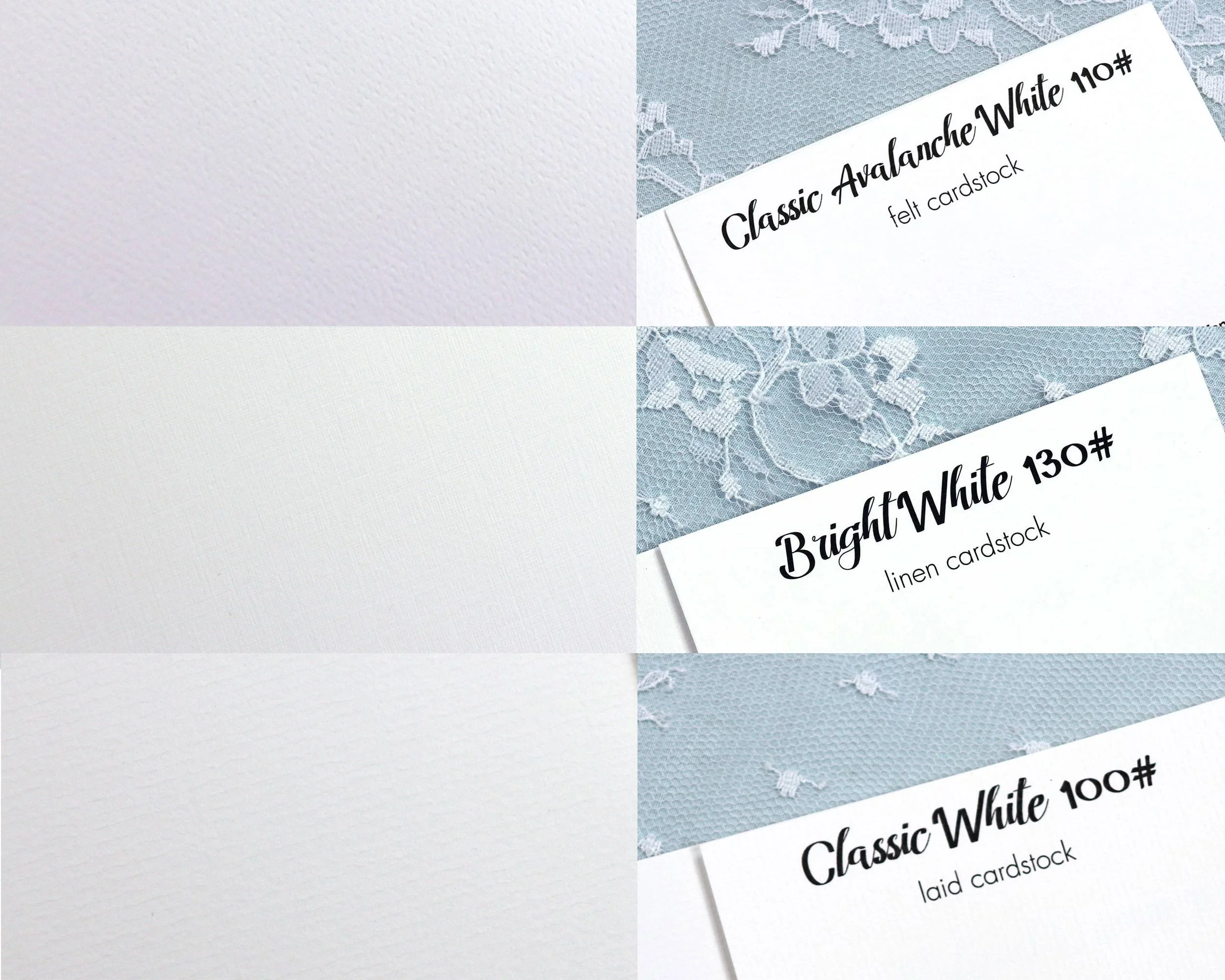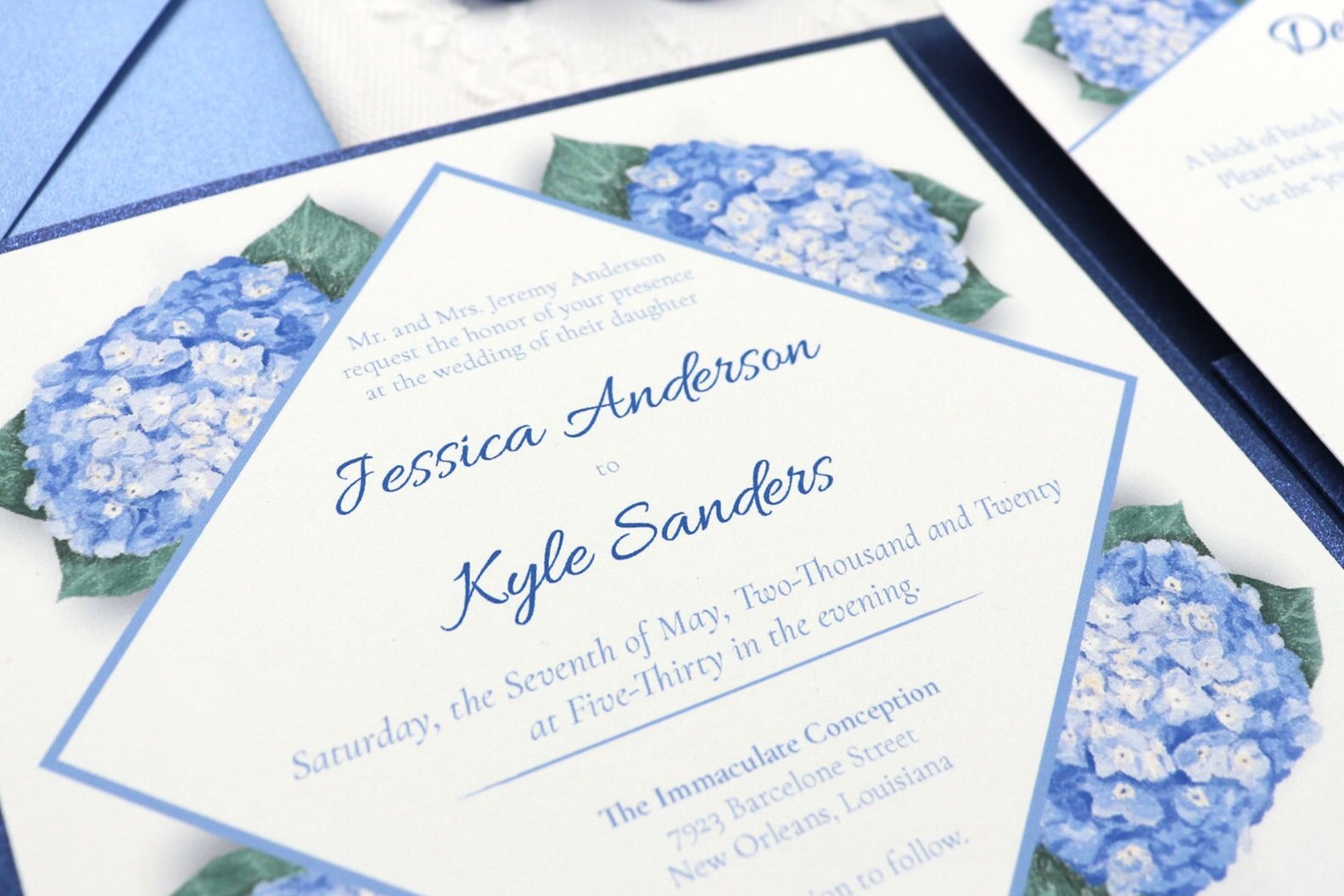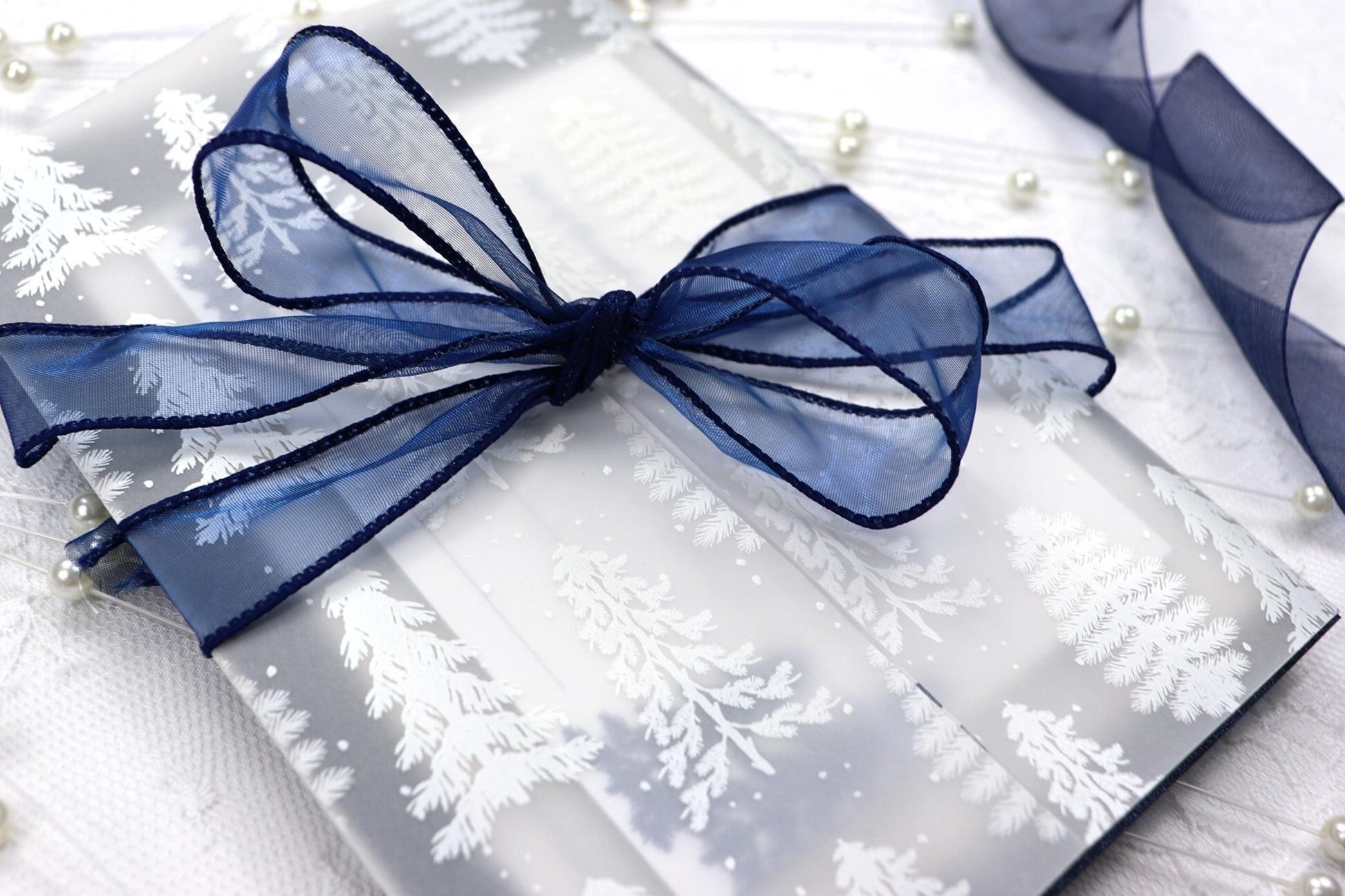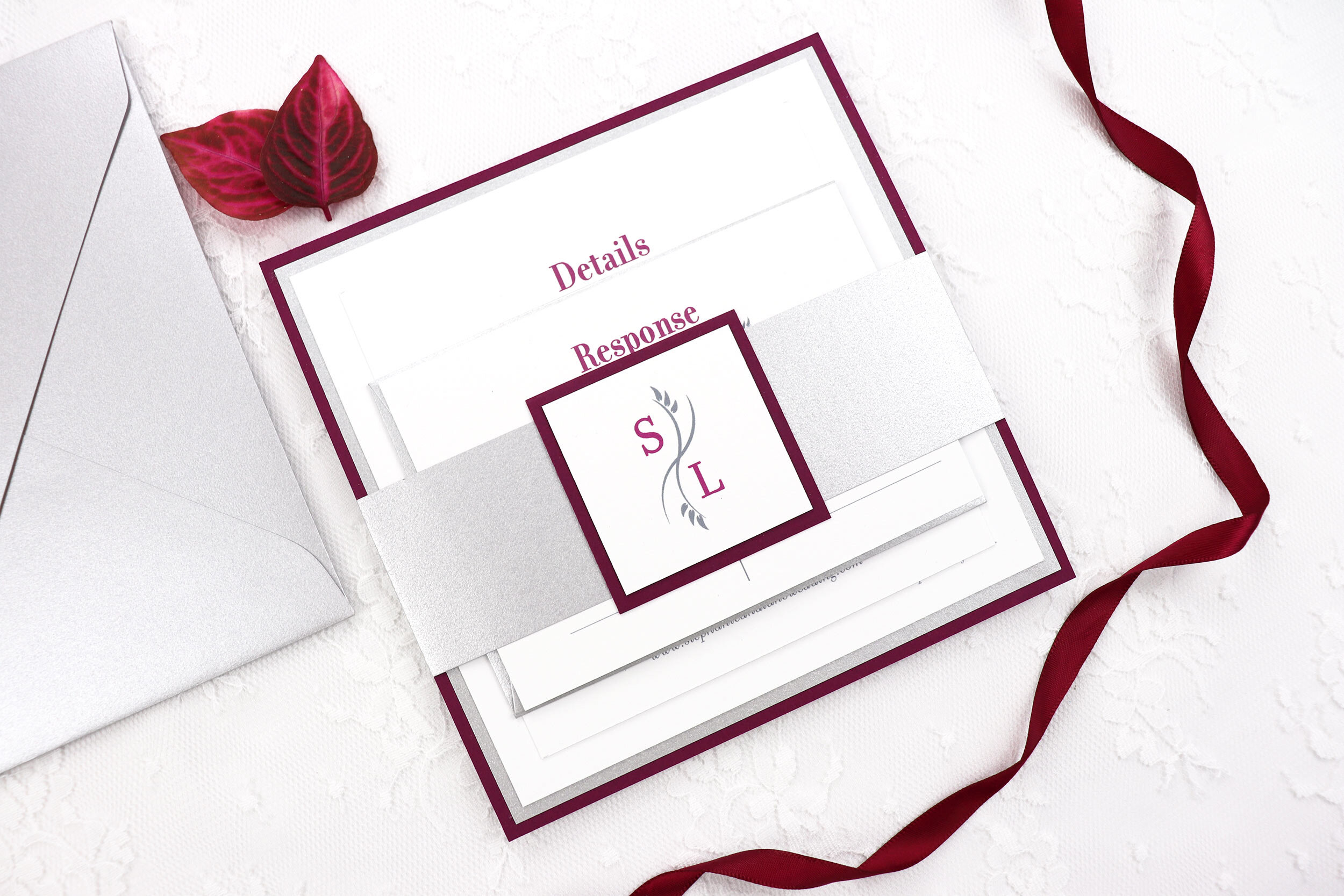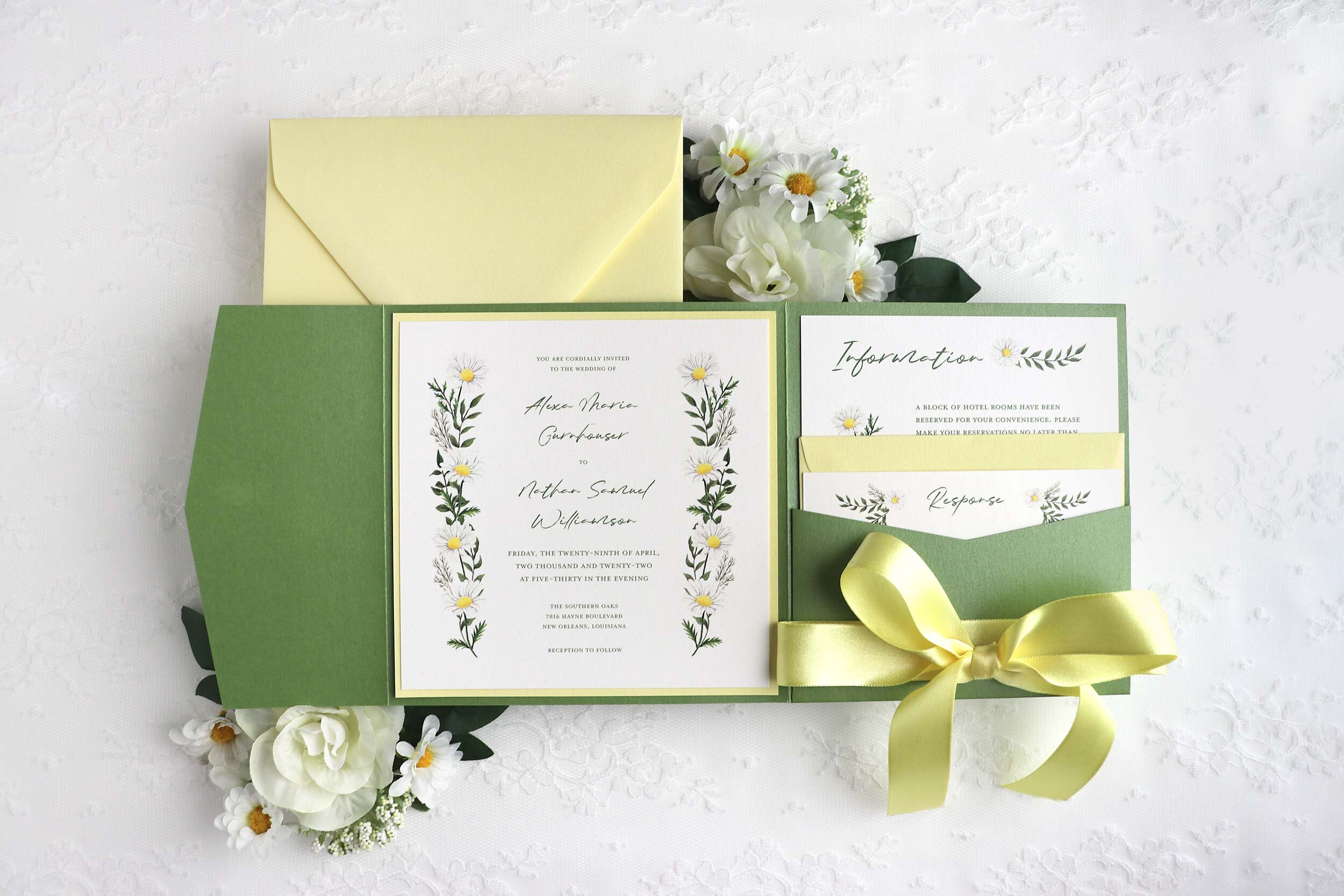What Do Wedding Invitations Cost? Wedding Invitation Paper, Printing, & Accessories
Last month, we talked about three main factors that go into the complicated topic of wedding invitation cost–quantity, quality of production materials, and level of service. We also took a deep dive into the three different levels of service, which should be your first deciding factor when budgeting for invitations. Check out that blog first if you haven’t read it!
A Real Wedding Invitation Pricing Guide–How Much Wedding Invitations Cost Based on 3 Key Factors
Today, we’ll take a look at the second most important component of wedding invitation cost–production and materials. If you’ve read the above blog, most of today’s discussion will apply to the semi-custom and custom-made service levels. This blog won’t give you a definite cost for each item, as that will vary between stationers. But it will serve as a guide to help you understand which materials cost more, why they cost more, and how they can elevate your invitations.
Wedding Invitation Paper
The cardstock quality is the first key factor in determining production cost.
Standard Paper Stock
Types of textured wedding paper (top to bottom): felt, linen, laid.
Most stationers have a standard, heavy-weight stock that performs well with almost any design. Typically, a standard stock either has a smooth surface or a very light, eggshell texture and comes in various tones of whites and creams. If you receive a preliminary proposal from a stationer, chances are the quote is for their standard stock unless otherwise noted.
Colored or Textured Paper
A next-level upgrade may include solid-colored paper or a white/cream stock with a pronounced texture, such as linen or felt. (See picture for reference.) This is a great way to step up the quality of your invitations, especially if you’re sticking with the digital printing process (more on printing below).
Cotton Paper or Double-Thick Paper
Double-thick paper compared to standard, 120 lb eggshell cardstock.
Two other great upgrade options, but they’ll likely come at a higher cost. Cotton is a soft, premium paper that’s made from cotton fibers rather than wood pulp, which also makes it more environmentally friendly. Double-thick paper is, as the name suggests, the thickness of two standard stocks pressed together. Use double-thick paper for a dramatic touch for simple, traditional designs. However, double-thick cardstock may also increase postage costs due to increased weight.
Handmade paper example.
Handmade Paper
This is the crowning gem of paper stock. If you’ve seen images of invitations with ruffled, torn edges (called a deckle edge), there’s a good chance the stock was handmade paper. Because handmade paper has a rough, organic surface that can be difficult to work with, it’s rarely offered in semi-custom lines and is reserved for premium, custom-made invitations. However, if your budget ranges in the several thousands, it will definitely set your invitations apart, as each piece has unique character.
(**Note: A deckle edge effect can be applied to a machine-made stock, although the process is time-consuming, and you’ll likely pay several dollars more per piece for the service.)
When choosing paper stock, it’s important to request a sample kit. The quality and texture differences can only truly be appreciated in person. Most semi-custom lines will offer prints of each template, which you can either order or request via email. Stationers who offer custom-made invitations will have a swatch book either in-store or that can be mailed to you. Camellia Memories offers examples of our semi-custom invitations for a small fee upon request, and for custom-made services, we ship a swatch booklet to you free of charge after signing with us!
For more about paper options, check out this blog.
Wedding Invitation Printing Processes
(Photo shows old-style letterpress lettering. Credit to Bruno/Germany via Pixabay.)
Digital Printing
The most common and economical option, digital printing is the type of printing your home or office printer performs. It’s a flat, full-color print process that works with most paper types discussed above. If your design includes multi-color graphics, then digital will be used at least in part. (Digital can be combined with other print processes.) However, it is not recommended for handmade paper or most solid-colored stocks.
White ink printing on a vellum wrap.
White Ink Printing
Thermography printing. See the light reflection on the “K” and “N”?
White ink is a flat printing process similar to digital, only the ink is solid white and looks incredible with dark paper stocks. Because this printing method is more specialized, you can expect to pay a little more per piece.
Thermography
A traditional wedding invitation printing style, thermography gives you a raised ink finish through a specialized heating process. Guests will enjoy running their fingers over the 3D lettering! Surprisingly, this method is also rather inexpensive and is a great choice to raise the bar of your invitations without significantly increasing the price.
Foil stamping example–more than just gold!
Foil Stamping (Not limited to gold!)
Letterpress printing example. See the indentation?
This process involves creating a custom die and hot-stamping metallic foil into the paper. Because a custom metal die must be produced, the price for this print method is significantly higher than the previous three. Expect to pay well over a hundred dollars per die. However, this print process is an excellent choice for almost any paper stock, colored or white, and will give you that extra pop of glam to make your invitations more eye-catching.
Letterpress
Much like foil stamping, letterpress requires a custom die, so expect a high price tag on this process as well. However, this is the oldest, most traditional print method, and it imprints the text with matte-finish ink into the paper. If you’ve ever seen an old-style printing press, then this is the method we’re talking about. Most often, a soft, white cotton paper is recommended for this process.
Invitation Accessories
&
Add-Ons
Lastly, accessories are a fun way to dress up your invitations. Accessories and add-ons include items that organize your insert cards or add extra design elements. The options are many, so we’ll keep our discussion today to the most common ones.
Belly bands can be more than just a strip of paper!
Belly Bands
A simple strip of decorative paper that keeps your insert cards organized inside the envelope. You can use a solid color paper or print a design on it, such as a monogram. Most are usually less than a dollar per piece.
Satin Ribbon
Well under a dollar per invitation, satin ribbon is a dressier alternative to a belly band. But use a ribbon that’s 5/8” or less in width, as the bulges in the envelope may cause trouble during the mailing process. Buy a big roll for the best savings! One yard per invitation is a good estimate.
Envelope Liners
Most are sold for a little over a dollar and add a lot fun to your envelope! Like the belly band, you can choose a solid color or have a design printed on it for a little more. Venue illustrations are popular for envelope liners, although you’ll likely have to pay a design fee for the illustration.
Vellum Wraps, Gate Cards, and Invitation Pockets
These fun embellishments present your invitation much like a gift. They fully envelope the cards inside, giving your guests an “unwrapping” experience. For a few dollars more, they really step up that first impression, especially if you go with a digital print. They do require assembly, and some stationers will give you the option to include assembly or do it yourself. This will affect the final price per piece, so be sure you know what’s included!
Wax Seals
Extremely popular right now, wax seals are a novelty that many guests will enjoy. They can be used almost anywhere–a design element on the invitation, a seal for the envelope, or a vellum wrap closure. Most cost somewhere between $1.50-$2.00 apiece. Although if you request a custom design or color, a design fee may be associated with it.
Silk or Velvet Ribbon
Another versatile option, silk and velvet ribbon may be used as a design element or as an insert card organizer. Of course, this fine material comes with a significant jump in price from the satin ribbon. Silk ribbon is often hand-dyed, so expect to pay $10 or more for only a few yards.
When it comes to your production materials, it’s best to choose one or two mid to high-end options that will make your invitations stand out. Whether that option is a paper upgrade, a non-digital printing process, or a fun accessory, your stationer will be able to guide you in the direction that’s best for your wedding style and budget. Here at Camellia Memories, we’re always happy to help!

